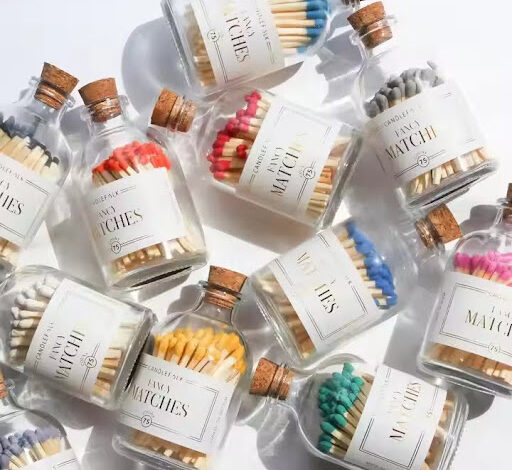From Survival to Style: The Rise of Aesthetic Bulk Matches

Matches were not only useful for decades; they were instruments stowed in camp packs, emergency kits, or the rear cabinet drawers in kitchens. Recently, however, they have transformed. Bulk matches are becoming decorative elements of design and personal expression in homes, stores, and Instagram feeds, rather than just a survival item. From vintage-inspired matchboxes to simple jars, the matchstick has evolved into both a practical and chic accessory.
More Than Fire
Fundamentally, a match’s goal is to light a fire. But in the age of aesthetic living, that aim is being redefined. Decorative match containers have replaced tabletops, coffee bars, and bathroom counters—not only for firestarting but also as part of the décor. Colored tips, hand-lettered labels, and cork stoppers in clear glass jars now accompany candles and incense, blurring the line between utility and art.
Bulk matches appeal to both the eye and practicality. Many different types exist—matte black stems, neontipped heads, and eco-friendly wooden shafts—and can be adapted to fit any décor, from rustic cabin vibes to sleek contemporary interiors. What used to be a disposable item is now purposefully exhibited. People want matches that not only seem nice but also work.
How Bulk Matches evolved to be a way of life necessity
The growth of aesthetic living has transformed even the tiniest household objects into ready candidates for reinvention. Bulk matches are joining the trend, much like reusable straws and handmade soaps have become lifestyle essentials. For candle lovers who want something prettier and safer than a plastic lighter next to their hand-poured wax masterpieces, they are a particularly appropriate friend. Lighting a candle becomes more of a ritual when you’re doing it with an aesthetically pleasing match.
Their popularity also draws on a rising need for tactile, slower life. Striking a match—hearing the hiss, seeing the spark, feeling the warmth—brings a sensory respite in a rapid digital world. It links us back with a tangible, analog moment. That experience, combined with an aesthetically pleasing presentation, makes matches seem like something more significant than only a means to ignite a fire.
The Simplicity and Sustainability Factor
Along with the aesthetic resurgence, there is also a pragmatic justification for people turning to matches: sustainability. Unlike disposable lighters, which contribute to plastic waste and often end up in landfills, wooden matches are a natural alternative. Bought in bulk, they also generate less packaging trash than smaller boxes. Offering matches made from sustainably harvested wood, recyclable containers, and plastic-free packaging, several companies are adopting eco-conscious ideas.
Originally a survival tool, matches have evolved into a versatile object that bridges the gap between outdoor practicality and indoor elegance. Today’s matches fit perfectly on a curated shelf as well as in a wilderness backpack. Matches have become both a tool and a mood setter, whether you’re getting ready for a backcountry trip or creating the tone for a supper party.
They help us to see that ordinary necessities don’t have to be drab. A return to hands-on living, environmental awareness, and personal expression may come from even something as little as a matchstick.
Final Words
Bulk matches have developed significantly from their gritty, functional roots. More than simply fires, they have sparked a movement that combines sustainability, utility, and beauty. These formerly ignored instruments are now illuminating areas with flair and personality, ranging from crude log cabins to elegant loft residences. Whether for survival, atmosphere, or both, aesthetic matches show that intention can make even the most basic items burn brighter.




